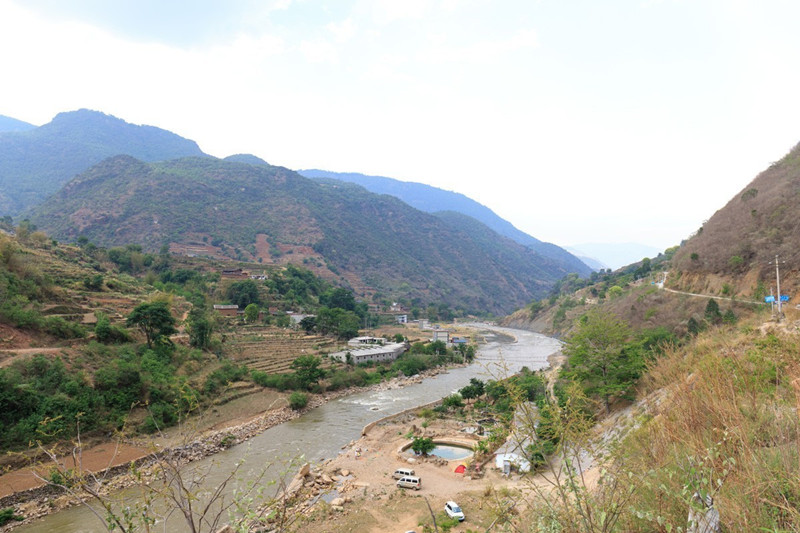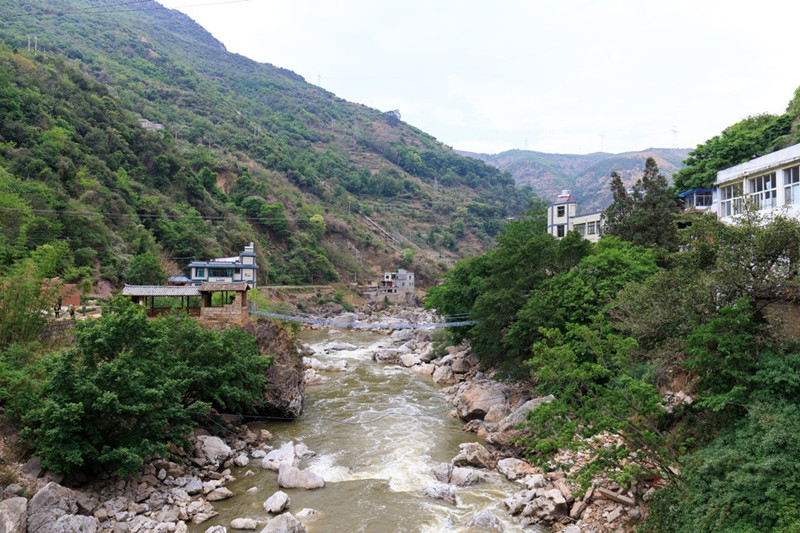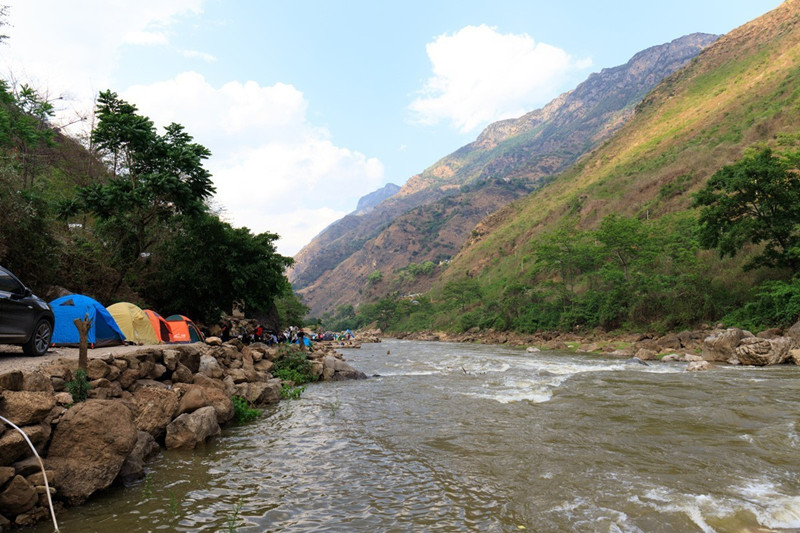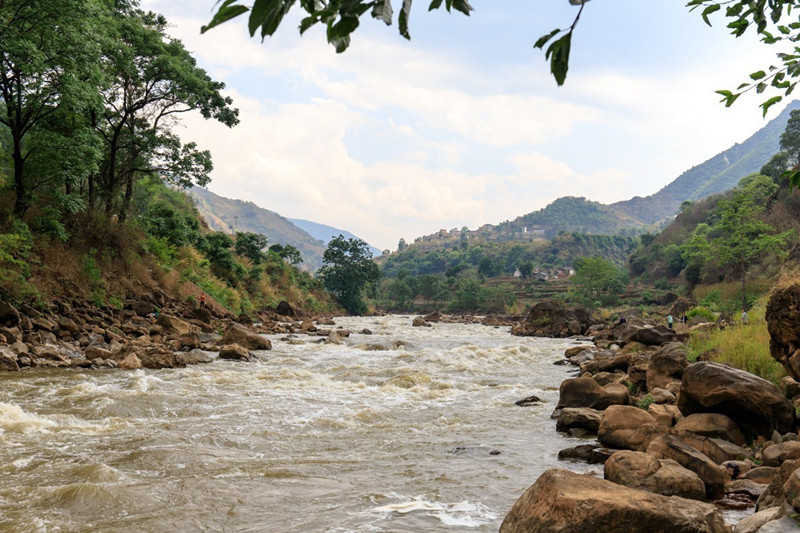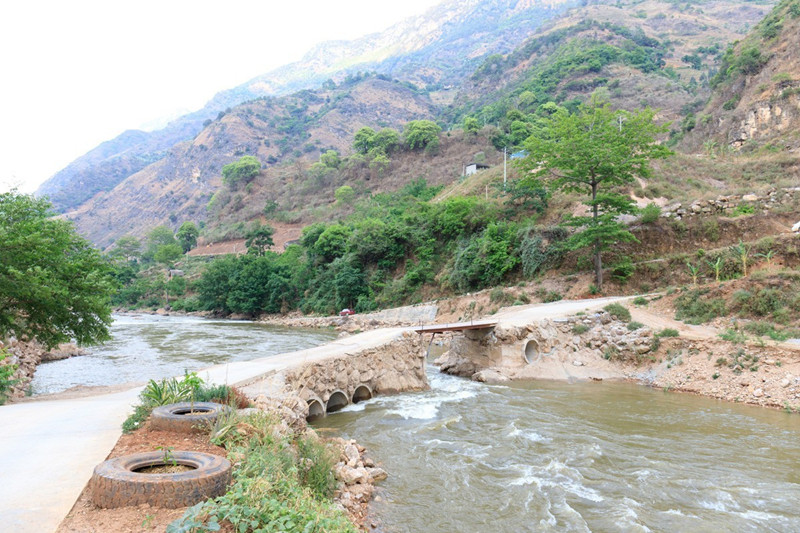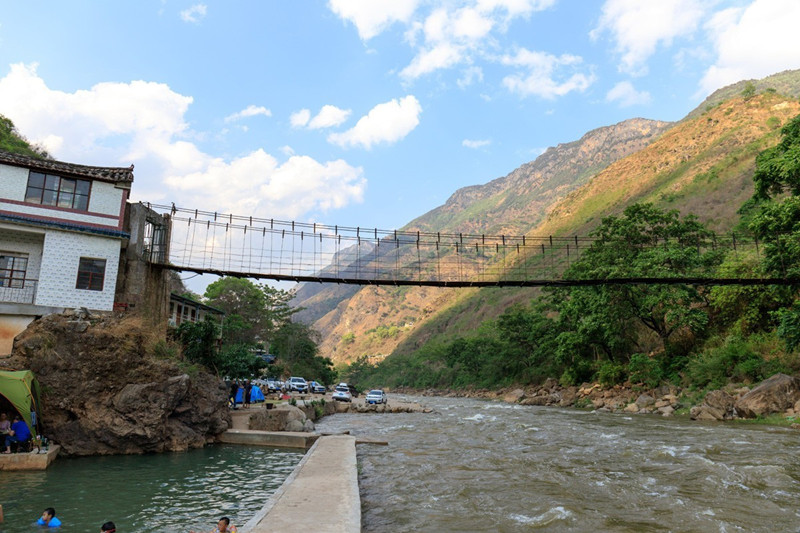Puduhe River Nature Reserve in Luquan County, Kunming
Overview
Puduhe River Nature Reserve (普渡河自然保护区) is located in Luquan County (禄劝县), covering an area of 11 hectares. Established in 1984, the reserve aims to protect the rare and endangered ancient plant Cycas panzhihuaensis (攀枝花苏铁).
- Chinese Name: 普渡河自然保护区
- Nature Reserve Level: Provincial Nature Reserve
- Area: 11 hectares
- Approved Year: 1984
Cycas (苏铁) is an ancient group of plants and one of the most primitive groups among seed plants. There is only one family with 110 species globally, primarily distributed in tropical and subtropical regions. In China, there is one genus with ten species. Puduhe Provincial Nature Reserve is one of the narrow and concentrated distribution areas of Cycas panzhihuaensis, which possesses significant scientific research and conservation value.
Kunming (昆明) is suitable for tourism year-round, with the best visiting period from March to October, as it showcases beautiful scenery and numerous festivals of ethnic minorities. It is also the season for abundant fruits and flowers. In early spring (March), one can still see the snow-capped mountains.
Kunming, known as the “Spring City,” has a temperate plateau humid monsoon climate, characterized by long sunshine hours and a mild climate throughout the year. Summers are not extremely hot, and winters are not harsh. This makes Kunming a favorable destination for tourism across all seasons. The annual average temperature in the urban area of Kunming is around 15°C, with the hottest months averaging between 19°C and 22°C, while the coldest months range from 6°C to 8°C.
Puduhe Scenic Area
The Puduhe Scenic Area (普渡河风景区) is located within Luquan County, covering an area of 11 hectares. The reserve aims to protect the rare and endangered ancient plant Cycas panzhihuaensis (攀枝花苏铁) and was established as a provincial nature reserve in 1984.
- Chinese Name: 普渡河风景区
- Geographical Location: Within Luquan County
- Area: 11 hectares
- Established Year: 1984
Puduhe River (普渡河) is a major tributary on the right bank of the Jinsha River (金沙江) located in central Yunnan Province. The river originates from Liangwang Mountain (梁王山) in Songming County (嵩明县) at an elevation of 2,600 meters. It flows through various districts and counties, including Guandu District (官渡区), Panlong District (盘龙区), Wuhua District (五华区), Xishan District (西山区), Chenggong District (呈贡县), Jinning County (晋宁县), Anning City (安宁市), Fumin County (富民县), and Luquan County, before merging with the Jinsha River one kilometer northeast of Heihe Xiaopengzi (黑区小河坪子). The total length of Puduhe River is about 380 kilometers, with a drop of approximately 1,850 meters and an average slope of about 4.9‰. The watershed area is approximately 11,090 square kilometers, with over 9,400 square kilometers within Kunming, accounting for about 85% of the Puduhe River watershed. Conventionally, Puduhe River is divided into four sections from upstream to downstream: Panlong River (盘龙江), Dianchi Lake (滇池), Tengchong River (螳螂川), and the lower section of Puduhe River.
Puduhe Grand Canyon
The Puduhe Grand Canyon (普渡河大峡谷) is situated within Luquan County. However, the truly magnificent section is from Sanjingkou (三江口) to where it converges with the Jinsha River. The following description pertains to the large canyon area near Kazu Village (卡租村) in the Zehai Township (则黑乡). Opposite Kazu Village lies the renowned Jiaozi Snow Mountain (轿子雪山). Here, visitors can enjoy stunning views of the vast and deep Puduhe Grand Canyon, as well as the towering and majestic Jiaozi Snow Mountain, the undulating Mazong Ridge (马鬃岭), and the cliff-hanging road from Wumeng Township (乌蒙乡) to Xueshan Township (雪山乡). Kazu Village is approximately 140 kilometers from Luquan County and 13 kilometers from Zehai Township. The entire route is paved with asphalt and cement, taking about three and a half hours one way. The road from Zehai to Kazu Village passes through a vast forest area, providing a perfect spot for a short break.
After leaving the second-class road Ludao Highway (禄大公路) from Luquan to Sayinpan Town (撒营盘镇), travelers enter the narrow Sazhe Section (撒则段) road. The famous Banbi Rock (板壁岩) along this section is situated on steep slopes or cliffs, requiring cautious driving.
A distant view from the Dega Village Committee (德嘎村委会) overlooks the ridge leading from Malutang Township (马鹿塘乡) to Pufu Village Committee (普福村委会).
The small town of Zehai under blue skies and white clouds offers picturesque views, as does the distant Zehai Reservoir (则黑水库).
The cement road leading from the east side of Zehai Township to Kazu Village is very narrow. Especially when leaving the town, there might be traffic congestion in the village area. Travelers will also pass through the renowned ten-thousand-acre forest. Following the winding mountain road, visitors arrive at Fameke Village (法木克村) by the banks of the Puduhe River. Across from Fameke Village is the famous cliff-hanging road in Xueshan Township, where the grand Puduhe Grand Canyon appears even more spectacular, leading up to the renowned Jiaozi Snow Mountain.
Kazu Village (卡租村).
Jiayan Hydropower Station (甲岩水电站) dam.
Some villagers from Kazu Village occasionally like to come here to gaze across the grand canyon at the snow mountain town and Jiaozi Snow Mountain or simply to daydream.
A flock of sheep returns home led by a shepherd.
The road from Kazu Village ends here.
The sunset casts its glow on Shugu (书姑) and the majestic Mazong Ridge (马鬃岭).
In the evening light, the imposing Mazong Ridge appears even more magnificent.
Hiking Guide: Exploring Puduhe River and Camping at the Immortal Dam
The longer the road traveled, the less ostentatious one becomes. The longer the journey, the more experiences one accumulates, which allows one to feel their own insignificance. What is called maturity is a process of self-restraint. When you restrain your brilliance and hide your exuberance, you drift further away from extravagance and arrogance.
From the Jiaozi Snow Mountain direct line to the snow mountain township road section, this is the famous cliff-hanging road in Luquan Snow Mountain Township (禄劝雪山乡). On the left, the snow-capped mountains rise steeply, while on the right lies the Puduhe River valley. The road is situated 1,820 meters above the valley. From a distance, the road looks like a fine line wrapped around the cliff, precariously hanging on the sheer wall, threatening to fall at any moment, with a sheer cliff beside it. Here, photography isn’t just about taking pictures; it feels like aerial photography. If a car were to fall off the road, it would be like an air disaster. Driving through here feels like riding on clouds, leaving a lasting impression, almost like dancing on the edge of a cliff.
The road winds and spirals, flanked by steep cliffs and loose stones. A slight deviation towards the edge brings a feeling of floating in the clouds. A glance down can leave one dizzy and terrified if they have a fear of heights; this is truly a road for the brave.
After about three and a half hours of driving, we arrive at the junction of the Wumeng Township (乌蒙乡) and Xueshan Township (雪山乡) road. Here is a viewpoint that offers the best views of the grand canyon. The most dangerous places often reveal the most beautiful views, as the infinite scenery unfolds at perilous peaks. Layers of rocky strata and a steep cliff showcase the wonders of nature. Above are the towering cliffs known as Wangtiang Cliff (望天崖), and below lies the magnificent Lao Gu Rock (老姑岩).
Descending the steps to the viewpoint, one can see steep cliffs lining both sides of the canyon, with snow-capped mountains stretching endlessly. Despite the challenging mountain canyon terrain, several villages are scattered throughout this remote area. The turquoise waters at the canyon’s bottom reflect the beauty of Puduhe River, which flows into the Jinsha River, eventually heading toward the distant Pacific Ocean.
Half an hour later, we turn onto Shugu Village’s (书姑村) Caozi Road (草子路) towards the Jiayan Hydropower Station (甲岩水电站). It is only ten minutes away. The dam here is built with towering concrete, appearing solid and robust. On the banks of the river, we can see the dam constructed at the head of the Puduhe River.
After strolling along the river for about an hour, we can start preparing for dinner and camping. Camping under the stars, with the gentle sound of flowing water accompanying us, we can enjoy the breathtaking beauty of nature.
In the evening, we can gather wood to start a fire. The flickering flames dance and reflect off the river, creating an enchanting atmosphere.
Address and Contact Information
- Address: Puduhe River Nature Reserve, Luquan County, Kunming City, Yunnan Province, China
- Contact Information:
- Tel: [Insert relevant phone numbers or contact details]
- Email: [Insert relevant email addresses]
Access and Transportation
- By Car: Visitors can access the nature reserve via private vehicle or taxi from Kunming, taking approximately 2 to 3 hours.
- By Public Transport: Buses are available from Kunming to Luquan County, followed by local transport to the nature reserve.
- Parking: On-site parking facilities are available for visitors.
Local Attractions
In addition to the nature reserve, nearby attractions include:
- Dianchi Lake: Known for its beautiful scenery and diverse wildlife.
- Jiaozi Snow Mountain: A popular destination for hiking and skiing.
- Luquan Ethnic Culture: Explore the rich cultural heritage of the local ethnic minorities.
